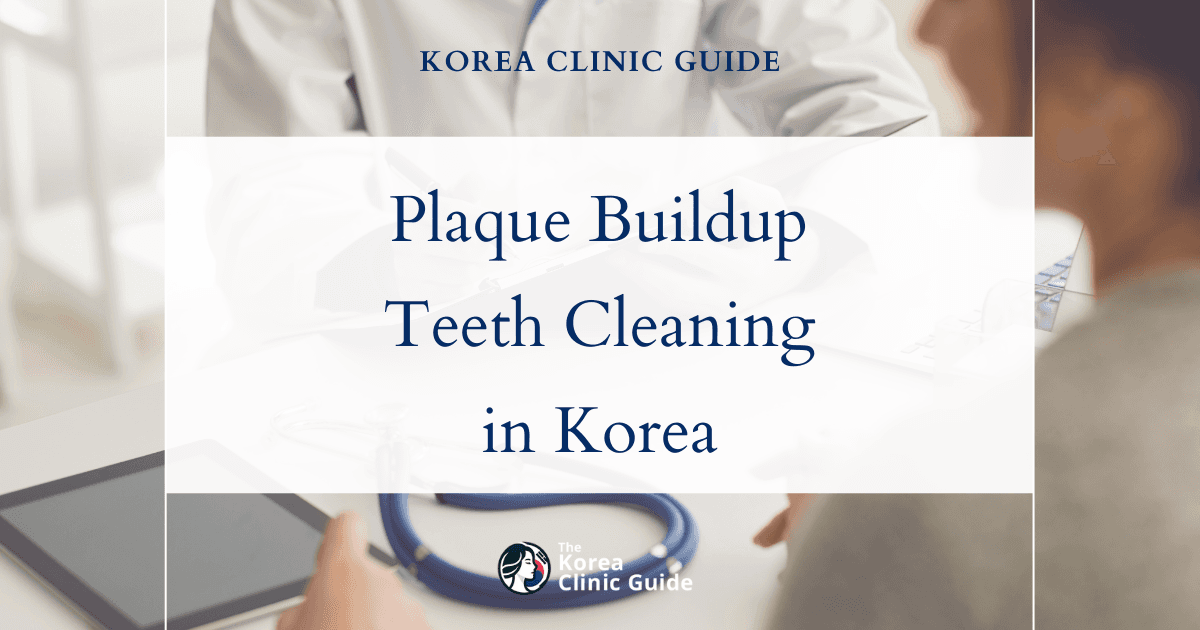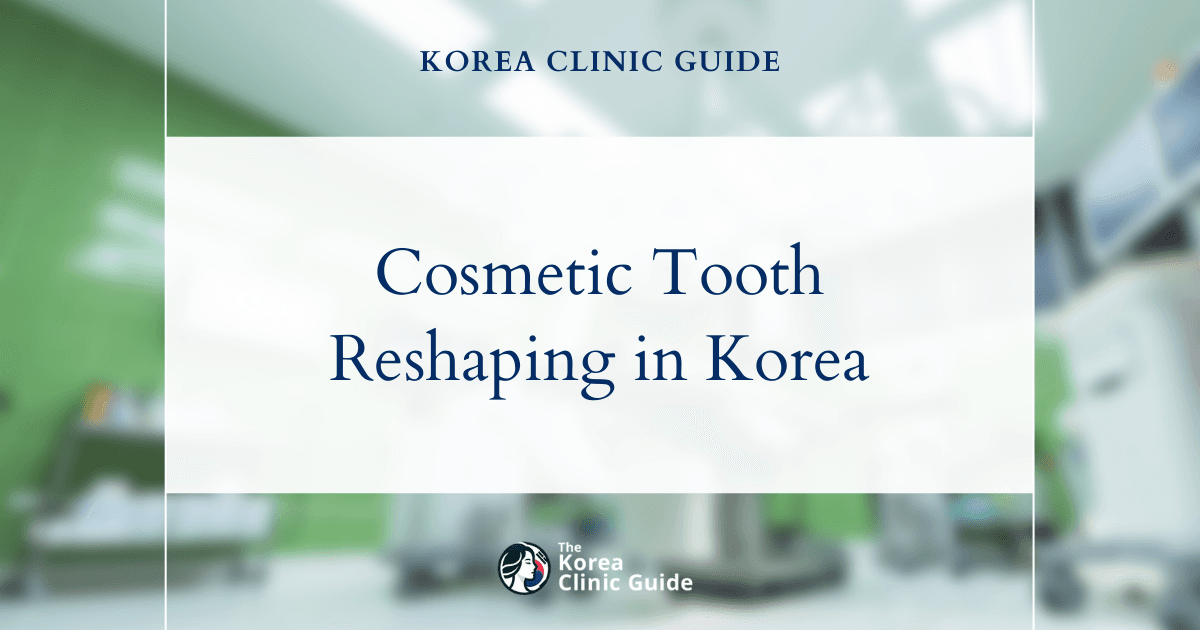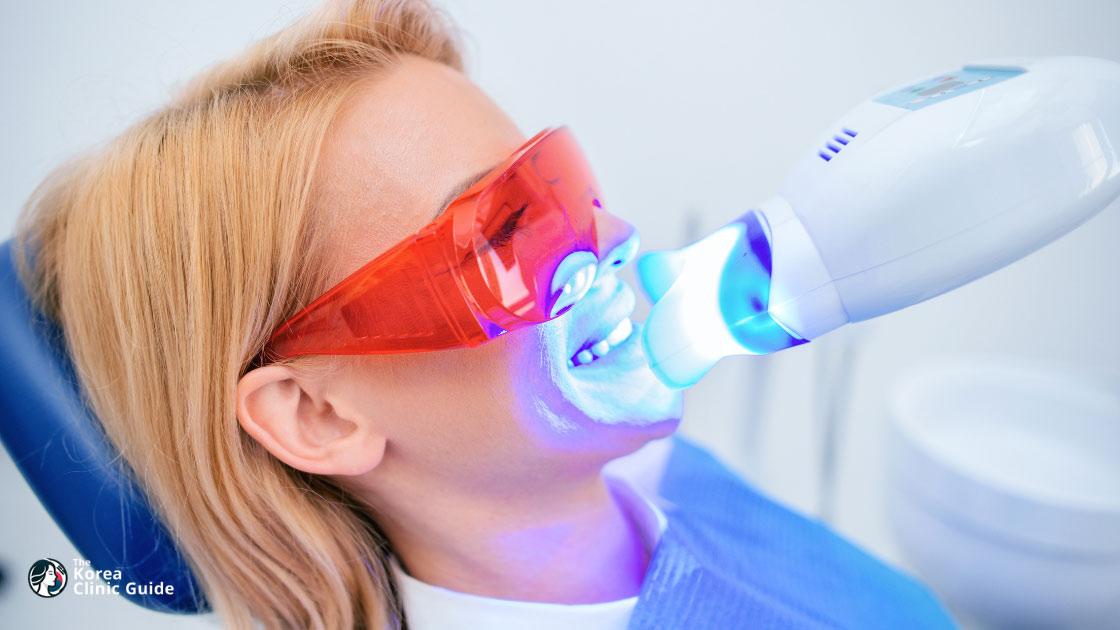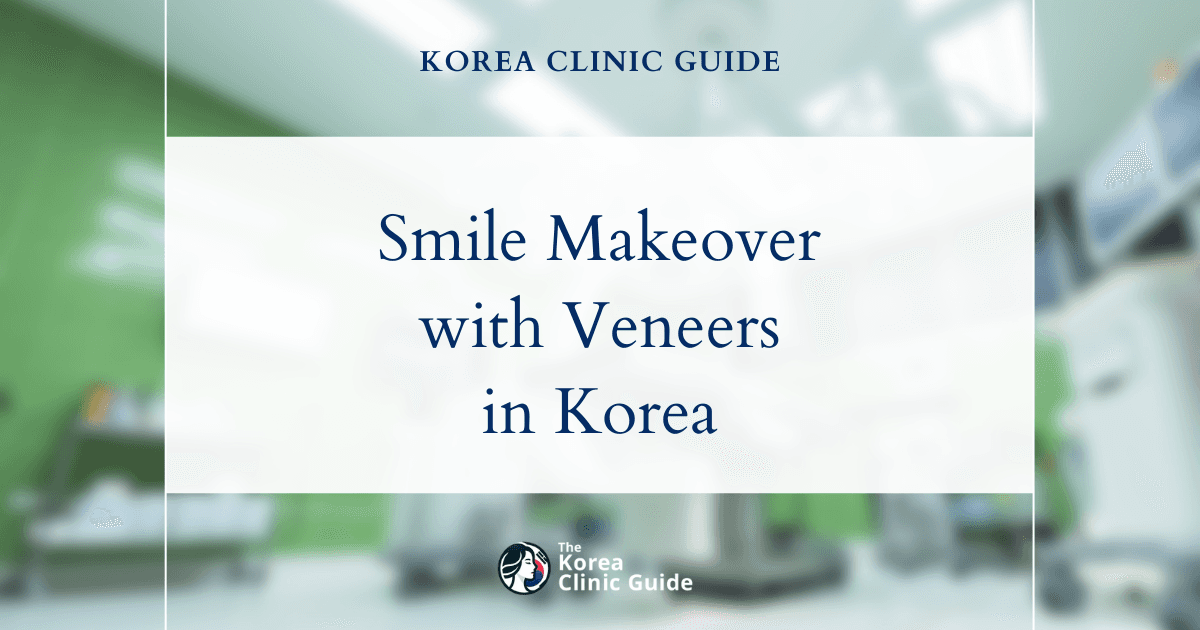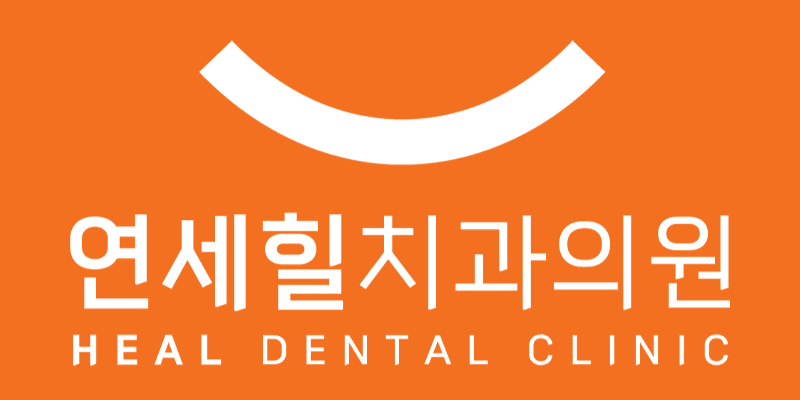Medical Tourism Blog
Teeth Crown in Korea | Best Clinics, Costs, Procedure Types & More
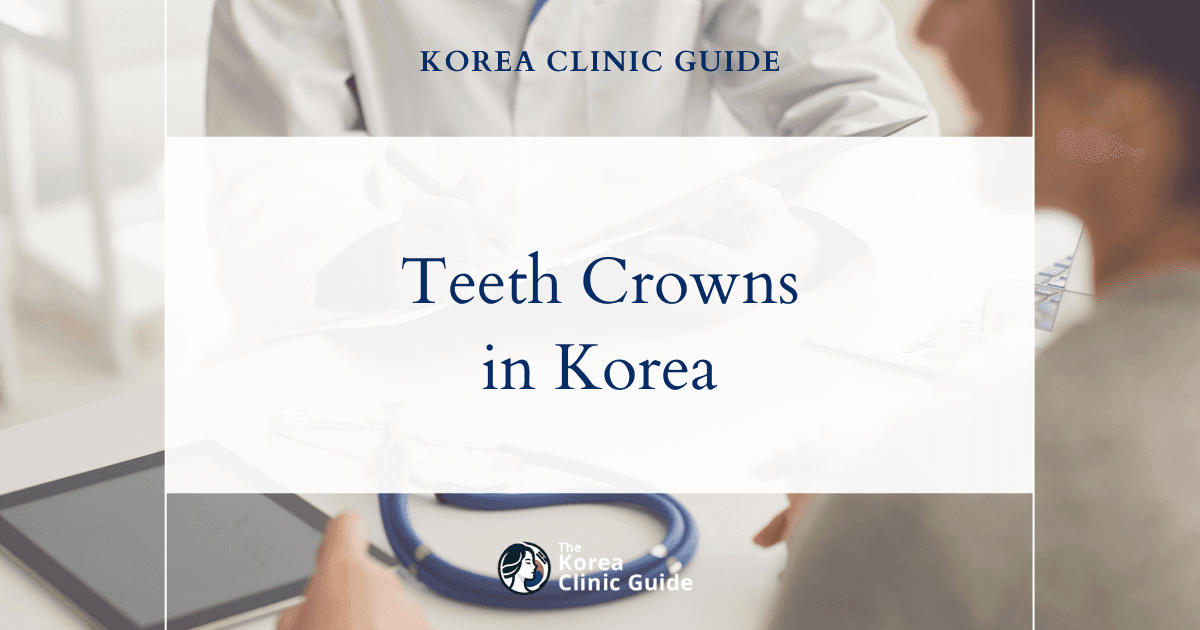
Table of contents
- What Is Teeth Crown?
- Best Clinics in Korea for Teeth Crown
- Teeth Crown in Korea
- Cost of Teeth Crown in Korea
- Alternatives to Teeth Crown
- Conclusion
Considering treatment in Korea? Everything you need to know e.g. — how to avoid scams, visas, interpreters, recovery tips — in our Medical Tourism Master Guide. Plan with confidence in minutes, not weeks!
Are you considering a smile makeover but worried about the cost and quality? Discover why Korea is becoming a go-to destination for dental crowns, offering state-of-the-art technologies and expert care at competitive prices.
What Is Teeth Crown?
A dental crown is a type of restoration that fully caps or encircles a tooth or dental implant, primarily used when a [large cavity](/blog/large-cavity-korea) threatens the ongoing health of a tooth. Often referred to as a "cap," a dental crown not only restores the tooth's shape, size, and strength but also improves its appearance. Crowns are bonded to the tooth using dental cement, ensuring they remain securely placed even during the most rigorous of activities, such as chewing and speaking.
Who Is It For?
Dental crowns are recommended for individuals with a variety of dental issues. They are ideal for anyone needing to:
- Protect a weakened tooth from breaking or hold together parts of a cracked tooth.
- Restore an already broken or severely worn down tooth.
- Cover and support a tooth with a large filling when there isn't a lot of tooth left.
- Hold a dental bridge in place.
- Cover misshaped or severely discolored teeth.
- Cover a dental implant.
- Improve the aesthetics of a smile by covering stained or malformed teeth.
Crowns are suitable for all ages, though the specific type and material of the crown may vary depending on a patient's unique dental condition and aesthetic goals.
Types of Teeth Crowns

There are several types of dental crowns, each varying in composition and suitability depending on the needs of the patient:
-
Metal Crowns: Made from alloys that contain a high content of gold or platinum, or base-metal alloys like cobalt-chromium. These crowns are known for their durability and biocompatibility, making them ideal for molars that require strength rather than aesthetics.
-
Porcelain-Fused-to-Metal (PFM) Crowns: These crowns offer a balance of aesthetics and strength. The metal structure is coated with a layer of porcelain to match the color of natural teeth, making them a popular choice for both front and back teeth.
-
All-Ceramic or All-Porcelain Crowns: Excellent for mimicking the natural translucency of teeth and providing the best natural color match. These crowns are ideal for patients with metal allergies and are often used for front teeth due to their superior aesthetic qualities.
-
Resin Crowns: Generally less expensive than other crown types, resin crowns are used as temporary crowns. However, they are not as strong or long-lasting and are more susceptible to fractures.
-
Pressed Ceramic Crowns: These have a hard inner core and are topped with porcelain. They offer a more natural color tone and are stronger than regular all-porcelain crowns, providing better longevity and aesthetics in areas that endure heavy biting pressure.
The Procedure
Getting a dental crown usually involves two visits to the dentist, although with advancements in technology, some dental offices now offer same-day crown procedures using CAD/CAM technology.
-
First Visit: Tooth Preparation and Temporary Crown:
- The dentist examines and prepares the tooth, which may involve taking X-rays and potentially performing a root canal if there's any risk of infection.
- The tooth is reshaped to make room for the crown. The amount of tooth taken off depends on the type of crown being installed.
- An impression of the reshaped tooth and the opposing tooth is made, which will serve as a model for creating the crown.
- A temporary crown is placed over the prepared tooth to protect it until the permanent crown is ready.
-
Second Visit: Permanent Crown Placement:
- The temporary crown is removed, and the fit and color of the permanent crown are examined. Adjustments are made as needed to ensure a natural fit and appearance.
- The new crown is permanently cemented onto the tooth.
For patients opting for the one-day procedure, once the tooth is reshaped, a digital impression is taken using specialized software, and the crown is designed and manufactured in the same visit.
Overall, dental crowns serve both restorative and cosmetic purposes, providing individuals in Korea and worldwide with enhanced dental functionality and appearance.
Best Clinics in Korea for Teeth Crown
Listed below are the best clinics in Korea for teeth crown:
| Clinic Name | Key Features | Special Techniques |
|---|---|---|
| Minish Dental Hospital | 14-floor, award-winning hospital with 102 dentists and 19 advanced dental equipment, VIP-level care, world-class language support, comprehensive dental solutions (veneers, bridges, implants, prosthodontics, orthodontics, spa), preferred by celebrities and international patients | Ultra-thin, custom-designed Minish Veneers (no tooth shaving), advanced 3D scanning and in-house milling, Minish Bridges, Pink Minish, Molar Minish, single-day smile transformations |
| Gangnam Gentle Dental Clinic | Internationally trained English-speaking dentists, patient-centered and honest consultations, tailored treatments for routine and specialized needs, robust safety/sterilization protocols, flexible appointments including weekends, CEO-led by Sungho Kim | Advanced digital equipment for precise diagnosis, wide range of crown, implant, cavity, and cosmetic procedures, prompt emergency dental care |
| Minish Dental Clinic - Gangnam | Premier destination for crowns in Korea, highly aesthetic restorations, authentic natural appearance, in-house lab enables single-visit treatment, efficient for locals and international patients | Revolutionary ultra-thin Minish veneers (under 0.2mm, no tooth shaving), exclusive German VITA ceramic blocks, 3D scanning and milling, chemical bonding for longevity, handcrafted restorations, Minish bridges for missing teeth |
Minish Dental Hospital
Minish Dental Hospital in Gangnam, Seoul, stands at the forefront of cosmetic and restorative dentistry, earning its reputation as Asia’s most highly awarded dental clinic. Renowned for its exclusive Minish Veneers, the hospital offers a groundbreaking alternative to traditional treatments like laminate veneers and dental crowns. Unlike conventional methods that require significant tooth shaving, Minish Veneers use ultra-thin, custom-designed ceramic blocks, meticulously crafted to resemble the color, texture, and translucency of natural teeth. Thanks to advanced 3D scanning and precise in-house milling, Minish can address a wide range of dental concerns—such as discoloration, misalignment, gaps, molar damage, and even missing teeth—often in a single day and without compromising the integrity of natural teeth.
The state-of-the-art 14-floor facility is equipped with 19 advanced pieces of dental equipment and led by a dedicated team of 102 top dentists and technicians. Minish Dental Hospital’s patient-focused ethos is reflected in its fully personalized treatment planning, world-class language support, and comprehensive suite of services including Minish Bridges, Molar Minish, Pink Minish, implants, orthodontics, prosthodontics, and even a unique dental spa experience. Trusted by international patients and Korean celebrities alike—including members of groups like BLACKPINK and NewJeans—Minish Dental Hospital combines technology, artistry, and empathy to deliver natural, lasting results, making it the destination of choice for those seeking exemplary dental care and smile transformations in Korea.
You can check out their website here: Minish Dental Hospital Website
Gangnam Gentle Dental Clinic
Gangnam Gentle Dental Clinic, located in Seocho-gu, Seoul, stands out as a leading destination for teeth crowns and comprehensive dental care in Korea. The clinic is headed by Dr. Travis Kim, who brings a wealth of international expertise from his studies at Ohio State University and St. Johnsbury Academy. Dr. Kim speaks fluent English, making Gangnam Gentle Dental Clinic an excellent choice for international patients who may have concerns about language barriers. With a commitment to personalized care, the clinic ensures that each patient receives treatments tailored to their specific dental needs, following thorough and honest consultations to avoid unnecessary procedures.
The clinic’s wide array of services—from teeth crowns and cavity treatments to advanced implants and cosmetic procedures—caters to both routine and specialized needs. Gangnam Gentle Dental Clinic is known for its dedication to patient comfort, offering flexible appointments on weekdays and weekends to suit busy schedules and ensure prompt emergency care when needed. The facility prioritizes safety with a robust infection prevention and sterilization system, and utilizes advanced digital equipment for precise examinations and minimized discomfort. Led by CEO Sungho Kim, the clinic maintains a reputation for trustworthy, patient-centered care, making it a premier option for anyone seeking dental crowns or other high-quality dental treatments in Korea.
You can check out their website here: Gangnam Gentle Dental Clinic Website

Minish Dental Clinic - Gangnam
Minish Dental Clinic in Gangnam stands out as the premier destination for teeth crown procedures in Korea, thanks to its revolutionary Minish veneers—a truly distinctive alternative to traditional laminate veneers or conventional crowns. Unlike standard options, Minish veneers employ exclusive ceramic Minish blocks produced in partnership with VITA in Germany, a material renowned for its uncanny resemblance to natural teeth in color, texture, biocompatibility, and light transmittance. This ensures the restoration not only looks remarkably authentic but also maintains the health of your underlying teeth, as Minish veneers require no shaving or removal of natural tooth material. Their cutting-edge approach, utilizing ultra-thin (less than 0.2mm) custom-fit veneers designed with state-of-the-art 3D scanners and milling machines, provides seamless solutions for a wide variety of dental challenges—from gapped, misaligned, or discolored teeth, to damaged or previously treated molars, and even missing teeth through inventive Minish bridges. Each restoration is meticulously handcrafted to harmonize with your personal dental anatomy, ensuring results that are both naturally beautiful and long-lasting. Thanks to Minish’s in-house laboratory and advanced technology, comprehensive treatments that typically took multiple visits can be accomplished in a single day—making it ideal for busy locals or international patients seeking efficient yet high-quality care. With a complete chemical bond to your tooth, guaranteed safety, and durability, Minish Dental Clinic offers the most advanced, minimally invasive, and aesthetic solution for those seeking the best crowns and cosmetic dental procedures in Korea.
You can check out their website here: Minish Dental Clinic - Gangnam Website
Teeth Crown in Korea
Getting a teeth crown in Korea is a comprehensive process that typically involves multiple steps and is conducted under the expertise of highly trained dental professionals. Renowned for its advanced medical technology and expertise in cosmetic dentistry, Korea offers a systematic and patient-focused approach to dental crown procedures.
Initial Consultation and Examination
The first step in the teeth crown procedure is an initial consultation with a dental specialist. During this visit, the dentist will conduct a thorough examination, which may include X-rays and digital imaging to evaluate the tooth structure. This assessment helps in determining the extent of tooth damage and whether a crown is the appropriate treatment. Korean dental clinics often employ cutting-edge technology to provide accurate diagnoses and to formulate personalized treatment plans.
Treatment Planning and Material Selection
Once the need for a crown is confirmed, the dentist will discuss the various options available. In Korea, patients can choose from different materials for crowns, including porcelain, ceramic, metal, or a combination of porcelain and metal. Each material has its advantages in terms of aesthetics, durability, and cost, and the dentist will provide recommendations based on the patient's specific needs and preferences.
Tooth Preparation
The next step in the process is tooth preparation, which involves reshaping the tooth to make space for the crown. This step is usually performed under local anesthesia to ensure patient comfort. The amount of tooth reduction depends on the type of crown being used. In Korea, dentists are known for their skill and precision, ensuring that minimal tooth structure is removed while maintaining the tooth's integrity.
Impressions and Temporary Crown
After tooth preparation, an impression of the tooth is taken to fabricate the custom crown. Korean dental clinics often use digital impression systems, which provide a more accurate and comfortable experience for the patient. The impression is used to create a model of the tooth, which guides the lab technicians in crafting the crown. Meanwhile, a temporary crown is placed to protect the prepared tooth. This temporary crown allows the patient to lead a normal lifestyle, speaking and eating comfortably until the permanent crown is ready.
Fabrication of the Permanent Crown
The permanent crown is typically crafted in a renowned dental laboratory, known for its high-quality restorations. Advanced technology such as CAD/CAM (computer-aided design and computer-aided manufacturing) is used to ensure precise fitting and superior aesthetics. The fabrication process may take a few days, and Korean dental clinics often collaborate with some of the best dental technicians in the field to guarantee a high standard of craftsmanship and quality.
Final Placement
Once the permanent crown is ready, the patient returns to the clinic for the final fitting. During this appointment, the dentist will remove the temporary crown and place the permanent one, making any necessary adjustments to achieve the perfect fit and bite alignment. Korean dental professionals are meticulous in ensuring that the crown feels natural and comfortable. The crown is then permanently secured in place using a strong dental adhesive.
Post-Procedure Care and Follow-Up
After the crown placement, the dentist will provide instructions on how to care for the new crown to ensure its longevity. Patients are typically advised to maintain good oral hygiene practices, including regular brushing and flossing, and to avoid habits that might damage the crown, like chewing on hard objects. Follow-up appointments may be scheduled to monitor the crown and overall dental health. The focus on patient education and post-procedure care illustrates the comprehensive approach taken by Korean dental practitioners in ensuring successful outcomes.
Throughout the teeth crown procedure in Korea, patients can expect a high level of professionalism, advanced technological support, and a strong emphasis on aesthetic and functional outcomes.
| Procedure Price | Korean Won (₩) | USD ($) |
|---|---|---|
| Low Price | ₩600,000 | $400 |
| High Price | ₩1,100,000 | $800 |
Exchange rate as of 2025-05-22: 1 KRW = 0.0007 USD
Please note that these prices are approximate guidelines and can vary significantly based on the clinic and your individual circumstances.
Cost of Teeth Crown in Korea
When considering dental treatments abroad, South Korea often emerges as a popular destination due to its advanced dental technology and cost-effective procedures. Teeth crowns, which are commonly used to restore damaged teeth or improve their appearance, are widely sought after by both locals and international patients. Below is an overview of the cost and associated expenses for obtaining teeth crowns in Korea.
Dental Procedure Costs
The cost of a teeth crown in South Korea typically ranges from ₩300,000 to ₩700,000 KRW (approximately $250 to $600 USD) per tooth. This price variation depends on several factors including:
-
Material Used: Porcelain crowns tend to be more expensive compared to metal or resin crowns. Zirconia crowns, known for their durability and natural appearance, often fall into the higher price range.
-
Dental Clinic: The price may also vary depending on the clinic’s location, reputation, and the dentist's expertise.
-
Additional Procedures: If additional dental work is required before placing the crown, such as root canal treatment or tooth buildup, it may increase the total cost.
Travel Expenses to Korea
When planning a dental trip to Korea, it's essential to consider travel costs, which include airfare, accommodation, and local transport.
Airfare
- The cost of flying to South Korea varies based on the point of departure, time of year, and airline choice. On average, a round-trip ticket from North America could cost between $700 to $1,200 USD.
Accommodation
- Accommodation in South Korea, especially in cities like Seoul where many reputable dental clinics are located, ranges from budget hostels at ₩30,000 to ₩50,000 KRW (approximately $25 to $40 USD) per night, to more luxurious hotels starting at ₩100,000 KRW (about $80 USD) per night.
Local Transportation
- Korea's public transportation system is efficient and affordable. A daily budget for transportation, using subways and buses, might be around ₩10,000 to ₩20,000 KRW (approximately $8 to $16 USD).
Additional Considerations
-
Meals and Other Expenses: Dining in Korea can be quite affordable, with the cost of meals ranging from ₩6,000 KRW (around $5 USD) for local cuisine to higher prices for international dishes.
-
Travel Insurance: It's advisable for international patients to have travel insurance, which might add another $50 to $100 USD to the budget, depending on coverage.
-
Language Services: If language is a concern, hiring a translator or choosing clinics with English-speaking staff may be beneficial. Some clinics offer these services included in their pricing, while others may charge extra.
In summary, while the initial cost of a teeth crown in Korea may seem favorable, understanding the additional travel expenses is crucial for budgeting the entire trip comprehensively.
Alternatives to Teeth Crown
When considering dental restorations, dental crowns are a popular choice for addressing decayed, broken, or weak teeth. However, there are alternatives that might be more suitable depending on the specific dental needs and goals. Here are three recommended alternatives to teeth crowns:
1. Inlays and Onlays
Inlays and onlays are conservative alternatives to full crowns, offering a middle ground between dental fillings and crowns. They are referred to as "indirect fillings" and are custom-made to fit the specific area of the tooth that needs restoration.
- Inlays: Fit within the cusps of the tooth and are typically used for treating the biting surface.
- Onlays: Extend over the cusps of the tooth and are used for more extensive restoration.
These options are ideal for teeth that are too damaged for a traditional filling but healthy enough to avoid a full crown. Inlays and onlays provide durable and aesthetically pleasing results, preserving more of the natural tooth structure compared to crowns.
2. Veneers
Veneers are thin, custom-made shells crafted from porcelain or composite resin, designed to cover the front surface of teeth. They are a popular choice for individuals seeking cosmetic improvements rather than functional restoration of significant dental damage.
- Uses: Ideal for covering cosmetic imperfections such as chips, discoloration, or minor misalignments.
- Advantages: They provide a natural tooth appearance with minimal impact on tooth structure.
Veneers require the removal of a small amount of enamel from the front of the teeth, but significantly less than what is needed for crowns, making them a less invasive option.
3. Tooth Extraction and Dental Implant
For severely decayed or structurally compromised teeth, a crown may not be sufficient. In such cases, a dentist might recommend tooth extraction followed by the placement of a dental implant. This process involves:
- Tooth Extraction: Removal of the damaged tooth to eliminate infection or significant structural concerns.
- Dental Implant Placement: A metal post is surgically positioned into the jawbone, serving as a sturdy anchor for a replacement tooth (implant crown).
Dental implants provide a long-term solution that mimics the look, feel, and function of a natural tooth. Though this option involves a more extensive procedure compared to crowns, it is an effective solution for replacing a lost or severely damaged tooth, offering lasting results with proper care.
Each of these alternatives has its own set of benefits and considerations, and the choice would depend on factors such as the location of the tooth, the extent of damage, personal preferences, and budget. Consulting with a dental professional can help determine the most suitable option based on individual dental health needs.
Conclusion
In conclusion, obtaining a dental crown in Korea presents a compelling option for those seeking advanced dental care, combining high-quality materials, skilled professionals, and cutting-edge technology at competitive prices. Korea's commitment to excellence in the medical and dental fields ensures patients receive top-notch treatment with a focus on aesthetic outcomes and durability. The widespread adoption of state-of-the-art techniques, coupled with personalized patient care, has positioned Korea as a leading destination for dental procedures globally. Whether for restorative or cosmetic purposes, a teeth crown treatment in Korea promises to enhance dental health and restore confidence, all within an efficient and patient-centric environment.



